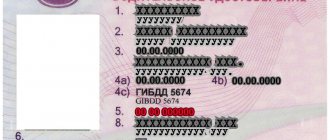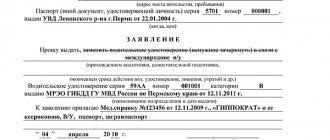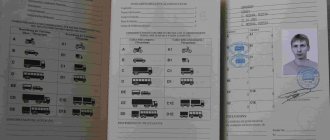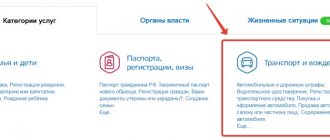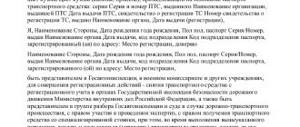What it is
The use of a car today must be carried out within the framework of special regulations.
At the moment, the main such document in our country is the traffic rules.
These were adopted relatively recently and have been edited several times. But it is important to remember that citizens of the country often travel outside the Russian Federation in their own vehicles to other states. In this case, it will be necessary to familiarize yourself with the traffic rules of other countries.
Today, one of the main documents that will need to be taken into account first of all is the Vienna Convention.
It is an international document to which most of the countries existing today have agreed. This convention makes it possible to standardize traffic rules across countries and make them uniform.
At the same time, such a convention resolves several different tasks at once. The place of joint development and adoption of such a document is Vienna, Austria. The original edition was created on 09/08/68.
It is worth noting that in parallel to this convention there is a similar one, but it concerns signs and signals. Later, the treaty regarding this convention was edited. This happened on May 1, 1971, but in Geneva.
Today, the list of countries that supported the adoption of such a convention includes several dozen.
This greatly simplifies traveling around the world in your own or rented car. The main feature of this convention is that driver’s licenses issued under it in the countries that have adopted it will be valid in other participating states.
There is no need to obtain special international ones. At the same time, on March 28, 2006, the format of the certificate, which can be recognized on the territory of other states, was changed.
States have been given 5 years to bring the format of national IDs to a single standard.
Driver's licenses issued on the territory of the Russian Federation since March 1, 2011 can be safely used outside the country. Since such VU are recognized by the countries participating in the Vienna Convention.
For those who received their national driver's license before this date, it will be necessary to obtain a special international driver's license.
The main tasks that this convention solves:
| Indicators | Description |
| Significantly simplifies the process of using a vehicle by a citizen of another country outside the Russian Federation | — |
| Makes the procedure for checking documents of foreigners much easier | since all driver's licenses are unified |
| Reduces the likelihood of accidents | since traffic rules and signs are completely standardized and unified |
Despite such unification and standardization, before traveling to another country, you will still need to familiarize yourself with the traffic rules in force there. There are specifics to using a car in each new region. Knowledge of these specifics will allow you to avoid many problems and difficulties directly related to driving a car.
Many accidents occur outside the country precisely due to simple ignorance and misunderstanding of traffic rules in another country.
Who does it apply to?
Today, the list of countries that have accepted and ratified the Vienna Convention is quite large and includes several dozen. On the map these are indicated as follows:
The following countries have acceded to the Vienna Convention of 1968 as of 2021:
- Austria, Armenia and Azerbaijan, Albania.
- Bahrain, Belarus, Bulgaria, Bosnia and Herzegovina, Vatican City and Brazil.
- Greece, Germany, Denmark.
- Moldova, Monaco.
- Ecuador, Estonia, South Africa (not all countries).
- A lot others.
It is also worth noting that there is a separate list of countries that have signed this convention, but have not ratified it. It is for this reason that before traveling to any country, you will need to familiarize yourself with the traffic rules.
And also make sure that the use of a national driver’s license is generally allowed in a particular country.
If the answer to this question is negative, or the driver’s license was issued before 2011, you should take care of obtaining an international driver’s license. Today this process is simplified as much as possible and does not take much time. Nevertheless, this issue will need to be taken care of in advance. This is the only way to avoid many difficult and even difficult moments.
Before traveling outside the Russian Federation in your own car, you should clarify in advance whether it is possible to use a specific driver’s license to confirm the right to drive a vehicle.
If such a right is absent, then a fairly serious fine will be imposed on citizens who committed the violation. In some countries, such a fine can be more than 1 thousand dollars.
What sources to look for?
Today it will not be difficult to familiarize yourself with the original type of convention under consideration. The original text of this document is presented on many resources on the Internet. It is important to familiarize yourself with the sections of this regulatory document in advance. This is the only way to avoid problems outside the country when using a car.
Knowledge of the law will allow you to avoid violating your own rights. It will give you the opportunity to control them yourself – without the obligatory consultation of a qualified lawyer.
Today, the most optimal solution in terms of searching for information on this matter is:
- Database Garant.
- Consultant.
Countries that have signed the Vienna Convention on Road Traffic are represented in the corresponding regulatory document. It is worth noting that since the registration of this type of documentation, it has hardly been edited.
There are no plans to make any significant changes to it in the near future. Nevertheless, a person planning to leave the Russian Federation in his own car should read the document.
Vienna Convention on Road Traffic Annex 6 contains all the necessary data regarding the countries that have adopted this document and ratified it. Moreover, it is important to note that acceptance and signing do not imply ratification - acceptance at the highest state level of this document for execution.
Therefore, it is important to pay attention to this point and first understand whether ratification is taking place.
It is through standardization that it is possible to achieve a minimum number of accidents in the countries that have adopted such a convention. Moreover, it will be necessary to note that in the countries that have adopted the convention, traffic signs, markings and many other aspects will be similar. This will significantly simplify the procedure of driving a car. Will allow you to avoid many problems.
Istanbul Convention: what is written in the scandalous document
What is the Istanbul Convention?
The Convention on Preventing Violence against Women was drafted by the Council of Europe and opened for signature in 2011 in Istanbul (hence why it is called the “Istanbul Convention”). This is the first legally binding document in Europe that aims to combat violence against women within and outside the family.
The Convention provides for the prevention of violence, public awareness, measures to investigate and prevent violence, as well as the elimination of all forms of discrimination against women, ensuring equality between men and women, as well as international cooperation in this area, helping non-governmental organizations and law enforcement agencies to eradicate violence in against women and domestic violence.
The full text of the document is available here.
Why is the Convention needed?
According to the latest EU survey, an average of 22% of women in EU countries have experienced physical and/or sexual violence from a current or former partner. In Latvia the figure is 32%, that is, 270,000 women aged 15 to 75 years.
Amnesty International claims that an estimated 500,000 women and girls in the European Union alone have suffered female genital mutilation (FGM), a form of violence against women and girls; another 180,000 are at risk each year.
The largest numbers of women and girls who come from countries where FGM is practiced live in the UK, Italy, France, Germany, Ireland, the Netherlands, Sweden and Belgium. This illegal operation affects women's health, well-being and self-realization.
The Convention acquired additional significance after the famous riots in Cologne on New Year's Eve. Largely in response to them, at the beginning of March this year, the European Commission called on EU member states to speed up the ratification of the Convention, as well as ensure the implementation of its objectives.
What obligations does the Convention impose?
The convention obliges states to criminalize acts such as female genital mutilation, forced marriage, stalking, forced abortion and forced sterilization. The Convention also calls for the involvement of all relevant government institutions and services in the fight against violence against women and domestic violence, ensuring their coordination.
Violence against women is considered in the Istanbul Convention as a violation of human rights and a form of discrimination. If the state does not respond accordingly, then the country is held responsible for such a crime.
Who signed the Convention?
The process of joining the Convention consists of two stages: first, the state must sign the document at the government level, and then ratify it by the national parliament. To date, 41 states have signed the Convention, and 21 have already fully ratified it.
Neighboring Estonia officially acceded to the convention in December 2014, but the Estonian parliament is only now preparing to make the changes to national legislation necessary for final ratification. Lithuania signed the Convention in June 2013. Ratification of the document is still pending.
Why is Latvia hesitating?
Active discussions about the need to join the Convention have been going on for six months. The main opponent is the Ministry of Justice, headed by the representative of the National Association Dzintars Rasnacs, and the so-called “fighters for morality”.
Public organizations that protect family values believe that the Istanbul Convention cannot be ratified, since this document supposedly allows for polygamy and legalizes such a concept as social gender. In turn, the Ministry of Justice saw the Convention as a threat to the Constitution. “The preamble [of the Constitution] clearly states that “the people of Latvia honor those who fought for their freedom and honor the memory of the victims of foreign power.” And the people of Latvia cannot accept that the international agreement contains a statement that Latvian men oppress women, discriminate against them, creating obstacles to the full development of women's potential. If there were no freedom fighters in Latvia, who are predominantly men, then our country would not exist. We cannot honor our freedom fighters while it is said that at the same time they hindered the development of women and suppressed her,” says a study commissioned by the Ministry of Justice.
According to ministerial experts, the proclamation of the Istanbul Convention will also conflict with the first paragraph of the Constitution, which states that “Latvia is an independent democratic republic.” Reason: The convention "will force an entire people to be dominated by one ideology - radical feminism."
Leaders of Christian denominations also expressed concern about the Convention. The head of the Roman Catholic Church in Latvia, Archbishop of Riga Zbigniew Stankiewicz, Archbishop of the Evangelical Lutheran Church Janis Vanags, Metropolitan of Riga and All Latvia Alexander and Bishop of the Latvian Baptist Union Peteris Sprogis signed an open letter in which they noted that this document causes them concern.
As a result, the Agency recommended that the government not sign the document. However, the minister's arguments did not find support within the coalition. Latvian President Raimonds Vējonis called the minister's behavior unacceptable. And the Latvian society of lesbians, gays, bisexuals, transpersons and their friends “Mosaic” demanded that the minister resign, since the Ministry of Justice promotes “very narrow and radical interests”, and “personal, ideological absurdity” reigns there.
What will happen next?
Under pressure from human rights organizations and lawyers not working for the Ministry of Justice, on Tuesday, May 10, the government finally agreed to sign a controversial international document. The Minister of Welfare, Jānis Reirs, has been entrusted with this task. It is planned that this event will take place this year. The final ratification of the document is planned to be completed before 2018.
However, Dzintars Rasnačs predicts that neither the current Seimas nor the next one will take upon themselves the courage to vote for the Istanbul Convention. In support of this scenario, yesterday five members of parliament circulated an open letter calling for the process to be stopped. It is noteworthy that among the opponents of the signing are representatives of five of the six factions working in the Seimas, namely, Yulia Stepanenko (“Consent”), Inga Bite (Latvian Regional Alliance), Silvia Schimfa (“From Heart to Latvia”), Valters Dambe (Union of Greens and Peasants) and Imants Paradnieks (National Association).
Vienna Convention on Road Traffic as amended
Today, the Vienna Convention on Road Traffic has its own characteristics. This document does not apply to all areas related to traffic regulation. These questions also need to be taken into account before you get behind the wheel of a car in another country.
Otherwise, ignorance of the regulations, rules and legislation of a particular state may cause an accident or other troubles.
Given exchange rates, such situations can result in extremely costly situations. Basic questions that will need to be clarified in advance before leaving the country:
- what it contains;
- which countries are included;
- driver's license information;
- suspension;
- important nuances;
- the legislative framework.
What does it contain
The convention itself is a fairly extensive document, including a wide range of different sections. It includes the following:
| Indicators | Description |
| Preamble to this document | — |
| Chapter 1 | introduction – includes a list of areas in which it is possible to apply this convention |
| Chapter 2 | directly the traffic rules that must be applied to driving in different countries |
| Chapter 3 | What are the conditions for allowing a vehicle to move in another country? |
| Chapter No. 4 | car drivers, the main requirements applied to them |
| Chapter No. 5 | basic conditions for the admission of bicycles, as well as other devices with a suspended engine, to traffic on the territory of other states |
In addition to the main chapters, there is also a wide list of appendices - the information indicated in them is also required to be followed. At the moment, there are many different nuances and features that are directly related to this convention. The following applications are presented:
| Indicators | Description |
| Appendix No. 1 | when is it permissible to deviate from the obligations of admitting trailers, cars |
| Appendix No. 2 | the process of registering cars and other vehicles used in international transport |
| Appendix No. 3 | indicates the need to install a special sign on a car or other vehicle that determines admission to the use of a vehicle on the territory of other states |
| Appendix No. 4 | what special identification marks exist to designate trailers and vehicles traveling internationally? |
Separately, it is worth noting that there is quite detailed and accurate information regarding the technical characteristics of cars and motorcycles used for movement outside the Russian Federation. Quite serious requirements are imposed on the management and technical condition of vehicles. The main sections of Appendix No. 5 containing all such requirements:
| Indicators | Description |
| Chapter No. 1 | braking moments and braking distance are determined for each specific case |
| Chapter No. 2 | the requirements for vehicle lighting devices, as well as other vehicle light signaling items, are considered |
| Chapter No. 3 | other regulations regarding steering, brakes, mirror viewing angles and much more are presented |
| Chapter No. 4 | determines when deviations from standard rules are possible and acceptable |
What features Chapter 12 of the Code of Administrative Offenses of the Russian Federation with comments has, you can find out in the article: Chapter 12 of the Code of Administrative Offenses of the Russian Federation with comments. If you are interested in what the Code of Administrative Offenses contains, read here.
Which countries are included?
The list of countries that have signed and ratified the Vienna Convention on Road Traffic Regulations is quite extensive. This list looks like this:
The designated list of countries is updated annually. There may also be other changes directly related to such a document. That is why it will be necessary to work out this moment in advance. Today you can easily find on the Internet the current version of the convention and the list of countries that have signed and ratified it.
Driver's license information
Separately, it will be necessary to study the issue of driver's licenses - since not all driver's licenses issued on the territory of our country imply the possibility of use in the territory of countries that have adopted the convention.
Today there is no requirement to obtain an international certificate, and citizens who obtained their license before March 11, 2011 can use a national one.
The front side of this document includes:
- personal data of the citizen written in Russian and transliterated;
- place and date of birth of the user of such rights;
- start and end date of the license;
- series and document number;
- open driving categories;
- signature and color photo.
The reverse side includes a table with a detailed description of all the categories presented. A similar type of license is issued in other countries that have adopted the Vienna Convention on Road Traffic Regulations.
If a driver’s license of a citizen of the Russian Federation was issued earlier than 2011 and has a form different from that presented above, he will need to obtain a special international license.
These are valid for 5 years from the date of receipt. But no more than the period of validity of the national driving license. The process of obtaining an international driver's license has certain subtleties and features. The question regarding a driver’s license is described quite accurately and in detail directly in the appendices of the document in question. At the moment, the main provisions that will need to be given attention first are:
| Indicators | Description |
| Appendix No. 6 | indicates what exactly a national driving license is, when its use is justified |
| Appendix No. 7 | international driving license |
Moreover, such a convention regulates in sufficient detail the model for using such a form of law. At the moment, Appendix No. 7 includes the following:
| Indicators | Description |
| Sample page #1 | front cover |
| Sample page #2 | a sample of the inside of the first cover page is installed |
| Sample page #3 | left page |
| Sample page #4 | right page |
The adopted convention is obligatory for compliance in countries that have completed the ratification process. It is important to work out this point in advance. The documentation process is also regulated by this legislative and regulatory document.
After receiving a driver's license, the driver will need to ensure that all the information on it is correct.
Suspension
The question often arises of suspending the regulatory document under consideration in whole or in part. It is worth noting that this process has many different subtleties.
Today, the issue of international treaties is regulated by a special document “Vienna Convention on the Law of International Treaties”.
Video: Vienna Convention on the Law of Treaties
Driver's license information
A citizen of every modern state can drive a car only on the basis of a special document - a driver's license, which is issued in the territory of the country of residence.
To obtain a license, you need to undergo special training at a vocational educational institution, and you also need to pass exams that are provided for by the country’s internal regulations.
Testing of driver knowledge is carried out only by competent employees of the same qualified organization where the future driver was trained.
More on AutoLex.Net:
Why don’t car dealers draw up documents according to the law during warranty repairs?
Such important criteria for drivers as driver age limits, health status and test requirements are developed and established in each state separately. Moreover, each of the documents should not contradict the generally accepted convention .
Driving vehicles on the territory of another state without a special permit is strictly prohibited.
Licenses authorized by law The Vienna Convention, adopted in 1968, relating to driving licenses for people visiting other countries, introduced two categories of driving licenses.
These are international and national rights, with which you can drive cars . Each certificate has its own individual requirements.
Features of national rights
Among the rules regarding the national ID are:
- The document is made of plastic or high-quality paper, usually pink.
- The dimensions of the document are 54*86 mm. This is not a mandatory requirement, but is preferred.
- At the top of the main side is the name of the document, which is written strictly in the national language.
- Personal information about the driver is written in the national language and must be duplicated in Latin letters.
- The front side should contain such important data as the driver’s first and last name, place and date of birth, time of issue of the license and its validity period, as well as the department that issued the document.
- A photo of the owner is required.
- Designates the category of cars that the driver has the right to drive.
- The driver’s personal signature is affixed to the license. It is desirable that it matches the signature in the passport.
On the reverse side of the document, information regarding the available categories of transport is indicated, along with the date of admission and its expiration.
If the driver has the right to drive a car with certain restrictions, for example, wearing glasses, this information must be indicated on the back of the license. Other information may also be indicated, the main thing is that it does not contradict the convention.
Features of the international certificate
If the national document does not have a unified form, then the international driver's license is official annex 7 to the world Vienna Convention.
Among the requirements that the document must meet are:
- rights are issued in the form of a small book with white pages and a gray cover;
- format 105*148 mm;
- the front side displays the following information: the country that issued the document, the series and number of the certificate, information about national rights;
- The full name and seal are indicated.
More on AutoLex.Net:
Do you get motion sickness on the road? Relax
Inside the document, information about the identity owner is indicated . We are talking about full name, date of birth, permanent place of residence and all available categories. As in the rights of the national category, there must be a photo and signature of the owner.
You can drive a car in countries that have signed the Vienna Convention only on the basis of an official national driver's license. The document must fully comply with the requirements of international law.
It should be noted that a modern international license is based only on a national document; therefore, in the process of driving a car, the driver must have two types of rights at once.
International rights are valid only if the national certificate has not expired. If this document has an unlimited period, the international form is issued for a period of three years.
As for other rights, the time of their relevance is based on an agreement between partner countries.
All precise aspects can be found out directly at the embassy of the country where the driver presumably decides to come.
In Russia, in 2011, a new model of driver’s license was introduced, which fully complies with the requirements of the international convention.
If the driver received his license earlier than this period, he will not have to obtain an international license to travel outside Russia.
Previously issued documents also complied with established standards.
Important nuances
There is a fairly wide list of important nuances that are directly related to the use of a vehicle outside the Russian Federation. The main nuances that you will need to familiarize yourself with in advance include:
| Indicators | Description |
| If the country has not previously ratified the Vienna Agreement | then it will be possible to use the car in one, but only if you have a special international driver's license |
| If the country is on the list of states that have accepted the relevant agreement | then it is allowed to drive a car if you have a national driving license - the appropriate sample |
It is also worth noting that the process of using a car is allowed only if you have an international-type MTPL policy. Such a policy is designated as a “Green Card”.
The absence of this will not only cause serious financial damage in the event of an accident outside the country. But also the basis for refusal to allow the vehicle to be cleared by customs.
List of Vienna Convention countries
In the table, we have highlighted in green the countries that have signed and ratified the convention. They recognize the new Russian national driver's license.
Countries that have signed the convention but do not adhere to its rules on their territory are highlighted in red. For example, in Spain or South Korea, a national driver's license alone will not be enough. But some rental companies can issue a car or scooter without an international document. We don’t know how the local police will look at this.
The rest either signed the document but did not ratify, or acceded and did not sign. It is also better to take international rights there.
These countries have acceded to the Vienna Convention
Status for 2021
Bosnia and Herzegovina
Great Britain and Northern Ireland
Some have introduced reservations to individual articles and appendices. Denmark considers mopeds with a maximum speed of more than 30 km/h as motorcycles, and Monaco equates all mopeds with motorcycles.
For up-to-date information about the parties to the Convention on Road Traffic, read the article “Convention on Road Traffic” on the UN website. Empty spaces in the “Accession(a), Succession(d), Ratification” column mean that the country has signed the convention, but has not introduced these rules on its territory.
Private car or scooter rental companies may ask you for an international license, even if the country has ratified the Vienna Convention. The owner is a gentleman. There are other cases. Sometimes the police illegally demand an international document. Without knowing the language, it will be difficult to explain to them that they are wrong. We recommend ordering an international driver's license just in case.
The legislative framework
Today, the use of a car on the territory of another state is carried out simultaneously within the framework of several different regulatory and legal documents of the international level. Today these include the following:
| Indicators | Description |
| From 05/23/69 | Vienna Convention on the Law of Treaties |
| Adopted in Vienna on November 8, 1968, as amended on September 28, 2004 | Convention on Road Traffic |
A citizen who wants to travel outside the Russian Federation in his own car will need to familiarize himself in advance with all the nuances and subtleties of the process of using a car within the framework of these documents.
Most of the problems occur due to banal ignorance and misunderstanding of basic legislative norms.
Find out what the technical regulations of the Customs Union on the safety of wheeled vehicles say in the article: technical regulations on the safety of wheeled vehicles. If you are interested in what the Federal Law says about road safety, read here. If you want to know what the consequences of car theft are under Article 166 of the Criminal Code of the Russian Federation, look here.
You will need to become familiar with all the nuances of the Vienna Convention on Road Traffic before crossing the border by car. This way you can prevent major problems.
Foreign national driver's licenses in Russia
Foreigners in Russia
In accordance with the requirements of the “Rules for passing qualification exams and issuing driver’s licenses”, approved by Government Decree No. 1396 of December 19, 1999, in the Russian Federation, persons temporarily staying on its territory have the right to drive vehicles if they have an international or foreign national driver’s license , meeting the requirements of the Vienna Convention on Road Traffic 1968, the entries in which are made or duplicated in letters of the Latin alphabet. Foreign national driver's licenses that do not meet the requirements of this Convention must have a duly certified translation into Russian.
Order 403 of the Ministry of Internal Affairs of the Russian Federation as amended
0 3771 The legislator periodically makes changes to existing regulations in order to improve certain areas related to the life of society.
On their basis, the relevant ministries put into action... — Read more —
Order 287 of the Ministry of Transport of the Russian Federation with the latest changes
0 28310 In the coming year, certain standards began to apply in the field of road safety.
They were established by Order No. 287, which was issued by the Ministry of Transport of the Russian Federation on September 28, 2015. The act sets out the qualifications... — Read more —
Order 152 of the Ministry of Transport of the Russian Federation with the latest changes
0 56771 In enterprises that have vehicles, a waybill is used in order to use them correctly.
Order of the Ministry of Transport No. 152 regulates the details that must be on the form of this document. In 2021… — Read more —
Suspension
If a person in a particular state that has taken part in the Vienna Convention has violated traffic rules for which a license is taken away, local traffic police officers have the right to take the following actions:
- Take away your license until the end of your sentence or travel outside the state.
- Provide information to the organization that issued the driver's license. This operation is carried out with the aim of limiting the validity of rights in the territory of the country where the violation of the right was committed.
- Set a restriction regarding the operation of a car in the territory of your home country. This is acceptable if the person has been issued an international identity card.
Each of the above actions can be attributed to deprivation of rights, and accordingly is punished strictly according to the law.
The driver should know that operating vehicles with a license that has some restrictions is equivalent to driving a car without special permits.
If certain restrictions on rights have been introduced into the document, the organization that is responsible for the security of traffic in the territory of a foreign state has every right to exercise control over this issue and receive evidence of violation and punishment.
More on AutoLex.Net:
Is it possible to buy a car with maternity capital in 2021? How to do it?
Code of Administrative Offenses of the Russian Federation with amendments
0 2242 Regulation of road safety issues is carried out in accordance with the standards of the Code of Administrative Offenses.
It has been repeatedly amended to regulate... — Read more —
Briefly about the convention
The Vienna Convention was adopted in 1968. The document was signed by 68 countries, among which the following states can be noted:
- Austria;
- Belarus;
- Armenia;
- Albania;
- Bulgaria;
- Brazil;
- Great Britain;
- Germany;
- Denmark;
- Greece;
- China;
- Korea;
- Mongolia;
- Netherlands;
- Romania;
- Slovenia;
- Thailand;
- Tunisia;
- France;
- Finland;
- Russia.
The document contains information about:
- traffic rules adopted in all countries;
- a driver's license giving the right to operate vehicles in all states;
- rules for operating vehicles equipped with trailers.
The annexes to the convention are:
- rules for registering vehicles and the mandatory presence of registration plates;
- type of national driver's license and rules for obtaining the document;
- type of international certificates;
- technical conditions for the approval of vehicles for operation on the territory of another state;
- rules for using identification marks.
The full text of the document can be found here.
Simultaneously with the document under consideration, a law on road signs and light signals was adopted. This law is necessary for the correct training of future drivers and standardization of signs in countries that have signed the convention.
Whether a driver's license is an identity document by law is discussed in the article: is a driver's license an identity document. The fine for driving a vehicle without a driver's license is here.
Technical regulations on the safety of wheeled vehicles
0 17987 All countries live according to the rules established by their legislation. To avoid disagreements during interaction, many states unite into unions, including economic ones.
An example is the Customs... — Read more —
Federal Highway Safety Act
0 3712 Today, the use of vehicles on the territory of our country is possible only within the framework of special legislation.
A certain movement mode is established, which affects not only him... — Read more —
Geneva Convention countries - what driving license is needed
Neither the USSR nor the Russian Federation ratified the Geneva Convention. In our country, traffic rules are consistent with the Vienna Convention. However, the requirements for obtaining a driver’s license differ between the Vienna and Geneva Conventions.
1. Each Contracting State shall permit a driver entering its territory and satisfying the conditions specified in Annex 8 to drive on its roads, without a new test, motor vehicles of the category or categories meeting the definitions of Annexes 9 and 10 for which the license to drive was issued to him. a permit to drive a motor vehicle by the appropriate authorities of another Contracting State or one of its territorial subdivisions, or by an association authorized by such authorities, shall remain in force after the ability to drive a motor vehicle has been established.
2. A Contracting State may, however, require a driver entering its territory to be in possession of an international driving permit conforming to the model given in Annex 10, in particular when the foreign driver arrives from a country where a driving permit is not required. driving, or if the domestic permit issued to him does not correspond to the model given in Appendix 9.
3. An international permit is issued by the competent authorities of one of the Contracting States or one of its territorial subdivisions, or by an association authorized by these authorities, with their seal or stamp to drivers who have proven their ability to drive vehicles. The permit gives the right to drive, without a new test, in all Contracting States, vehicles belonging to the category for which it is issued.
A comment. Paragraph 1 allows a citizen of a foreign state to drive a vehicle if his driver’s license meets the requirements of Appendix 9. Otherwise, paragraph 2 indicates the need to obtain an international license.
Size: 74 x 105 mm Colour: pink 1. The permit shall be drawn up in the language or languages prescribed by the laws of the State in which it is issued. 2. The title of the document is indicated in the language or languages indicated in the previous paragraph, followed by its translation into French “permis de conduire”. 3. Directions written by hand are given (or, in any case, repeated) in block letters of the Latin alphabet or in cursive...
A comment. The line “permis de conduire” (French: “Driver’s license”) was added to the new Russian license of 2011, but was removed in the edition of the license of 2014. They probably removed it because Russia only ratified the Vienna Convention, and there is no such requirement there.
A Russian citizen will not be able to take advantage of Russian national rights in countries that have only acceded to the Geneva Convention. Our national driving license does not meet the requirements.
If you are traveling to a country that has joined the Geneva Convention, apply for an international driver's license from the traffic police. It must be presented to the local police together with your national license. Without an IDP, you will not be given a rental car or scooter.
Article 166 of the Criminal Code of the Russian Federation on car theft
0 3174 Using a vehicle for any purpose without informing the owner will cause serious trouble.
This situation falls under Art. No. 166 of the Criminal Code of the Russian Federation and implies in a number of cases... — Read more —

